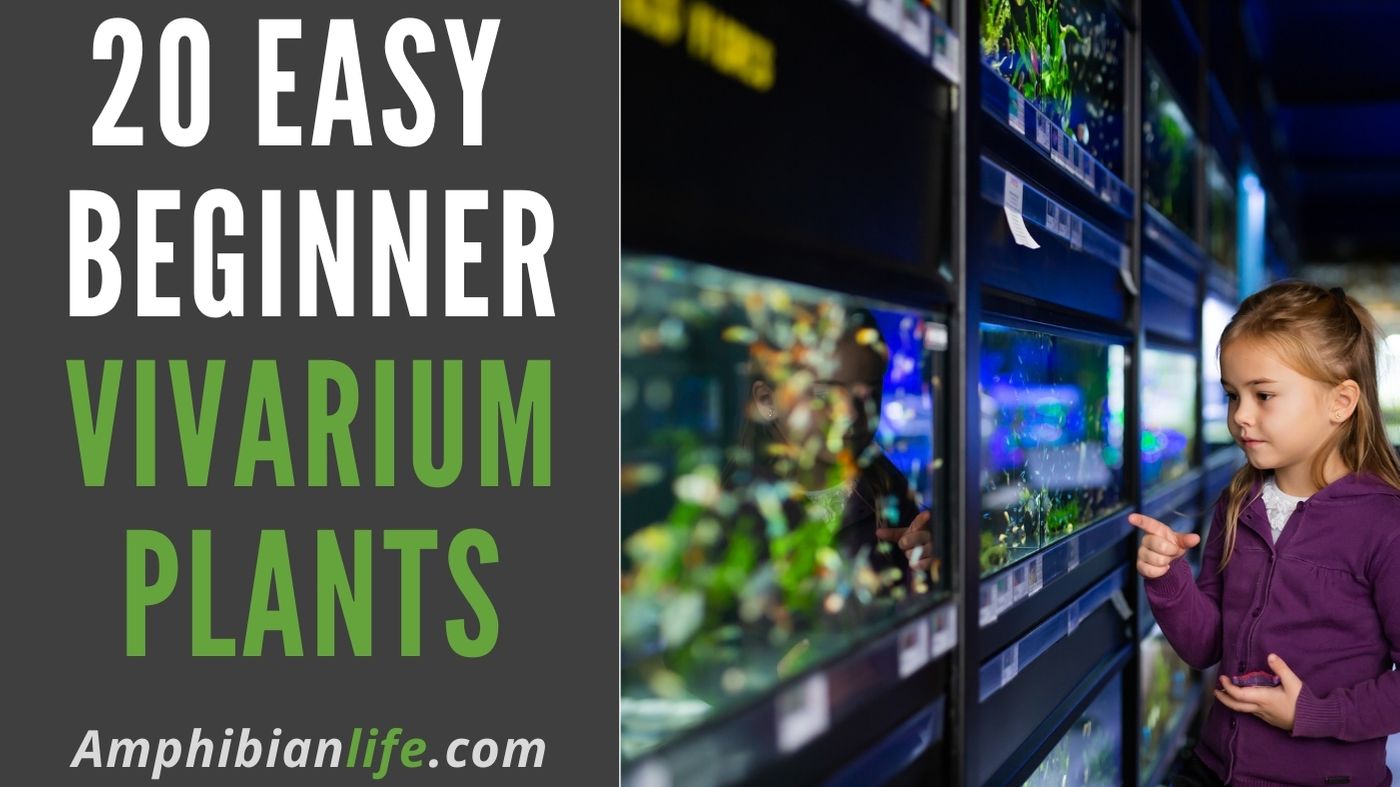
Top 8 beginner VIVARIUM plants!
A lot of us have or want to set up a vivarium but have confusion about which plants to start with?
Here is a comprehensive guide that gives you various prospects about Bromeliads for beginners to start with.
Before we dive in let us quickly understand the two terms Epiphytes and Bromeliads.
What are Bromeliads? The Bromeliaceae is a family of grass and grass-like flowering plants with 3500+ known species that are native to American Tropics, with a few species in American west Africa subtropics.
What are Epiphytes? An epiphyte is a plant organism that grows on host plants to access sunlight and natural ingredients.
Is epiphyte a parasite? The simple answer is No. They are not parasitic in nature, They take no nutrients from the tree or host plants instead but rely on nutrients from the air, rain, compost that lies on trees.
Read more about ‘Ariums’ Terrarium vs Vivarium vs Paludariums and other ‘Ariums
Aechmea Bromeliads: Plant Care & Growing Guide
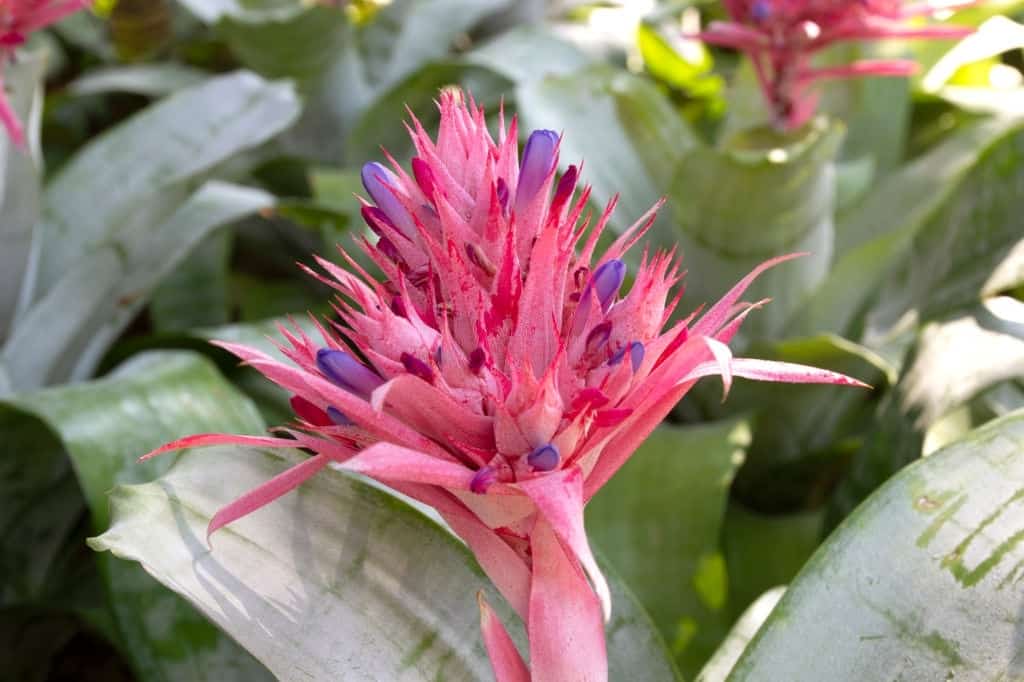
Plants of this genus are among the most popular bromeliads seen for sale; the species most commonly available in the US is A. fasciata.
This species is often seen in supermarkets, with its gray-green leaves sprinkled with white powdery scales, and its inflorescence composed of stiff pink bracts (flower spike).
Its slightly spiny-edged leaves form a large watertight cup, perfect for a tadpole nursery. Another species that holds a lot of water is A. fulgens; this species carries red berries for a long time on its inflorescence.
The variety discolor has wine-red undersides to its leaves. Unfortunately, these plants are too large for most vivariums, reaching almost two feet across.
Smaller species are A. gamosepalous, which has round-ended leaves arranged in a rather tubular rosette, and lavender-blue berry-like flowers,
A. recurvarta and its varieties, which don’t hold much water but are a sturdy and attractive contrast with their narrow-pointed leaves.
Aechmeas like a bright light to maintain their firm leaf growth and they grow well epiphytically.
- Use as a centerpiece against a mirrored surface
- Includes a modern slanted glass vase
- Realistic bromeliad bloom
- Uses quality handcrafted materials
- Item may need to be re-shaped when removed from box
Billbergia or Queen’s tears Bromeliads: Plant Care & Growing Guide
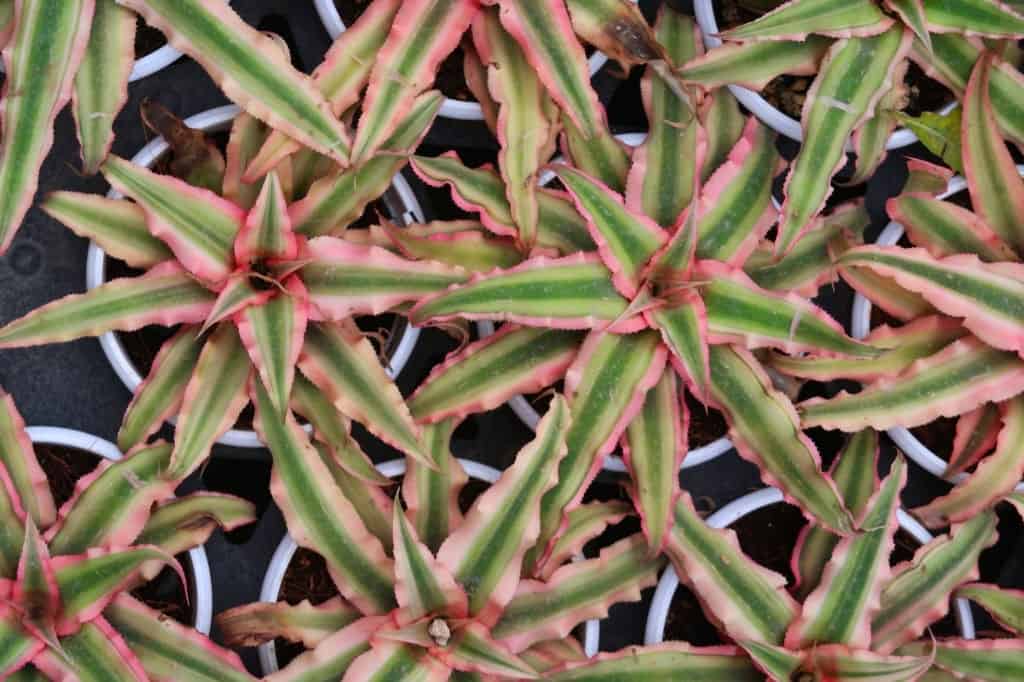
This is another kind of bromeliad that grows well in terrariums; they are especially hardy and fast growers. Queen’s Tears, B. nutans, is an old favorite.
Their flower stems don’t last very long but are attractive, often looking like they have pink or red streamers tied to their stalks.
Leaves also have very attractive patterns.
How To Take Care Of Billbergia Plant?
Billbergias don’t have many leaves per plant, but they can quickly form thick clumps. Several types can hold a lot of water, making them potential frog nurseries.
Most varieties grow rather large like the Aechmeas, but some hybrids form very compact tubes that could fit in well in a vivarium.
Bright lighting keeps them more compact and maintains leaf color as well.
Cryptanthus Bromeliads: Plant Care & Growing Guide
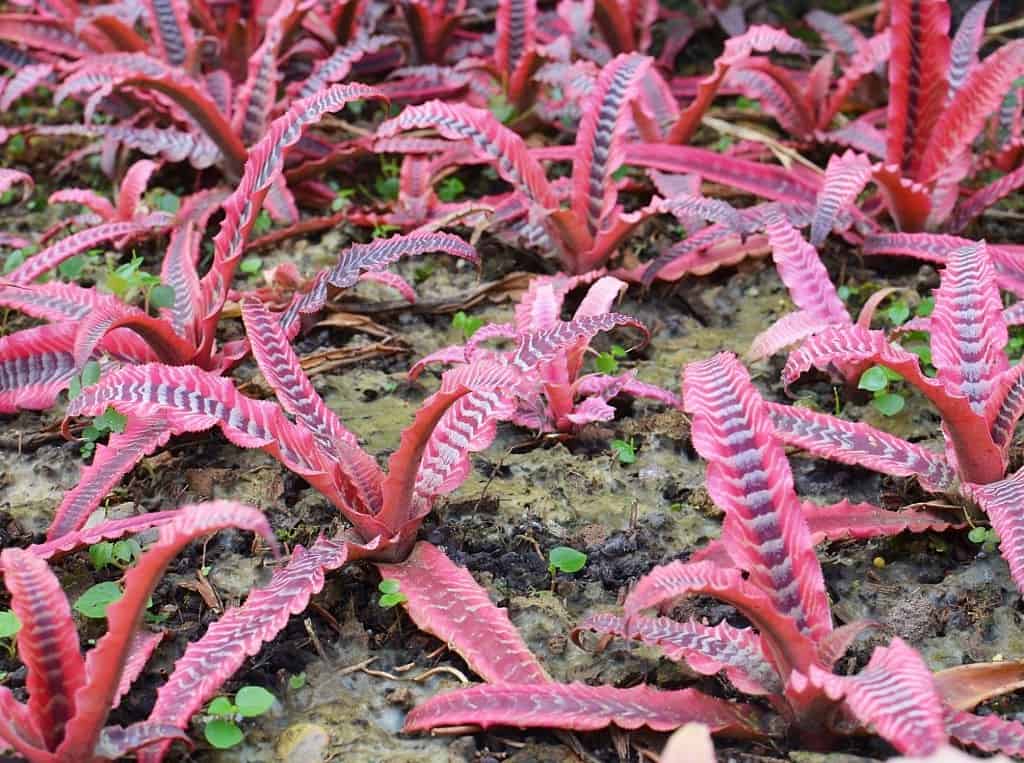
Popularly known as earth stars, they are popular vivarium plants due to their small size and non-water-holding cup characteristic
They are mostly terrestrial plants and do better planted in a well-draining substrate rather than as epiphytes. They also prefer bright light to maintain their colors.
C. bivittatus has leaves with lengthwise stripes, sometimes pink or red depending on the variety. C. fosteranus and C. zonatus both have leaves with silvery crossbars on dark backgrounds.
- SPECIFIC BLEND of potting soil, perlite, and orchid bark for growing Bromeliads in your home
- FAST-DRAINING soil prevents soggy roots, which is common in pot grown Bromeliads
- PROVIDES STRUCTURE for the roots to grab so that the plant will remain upright
- LITTLE SOIL NEEDED as Bromeliads have small root systems and only need small pots
- MORE SOILS from Sprig & Stone! We also offer soils for Christmas Cacti, Cacti, Carnivorous Plants, Gesneriads, Rhipsalis, African Violets, Succulents, Orchids, and Tropical Plants!
Guzmania Bromeliads: Plant Care & Growing Guide
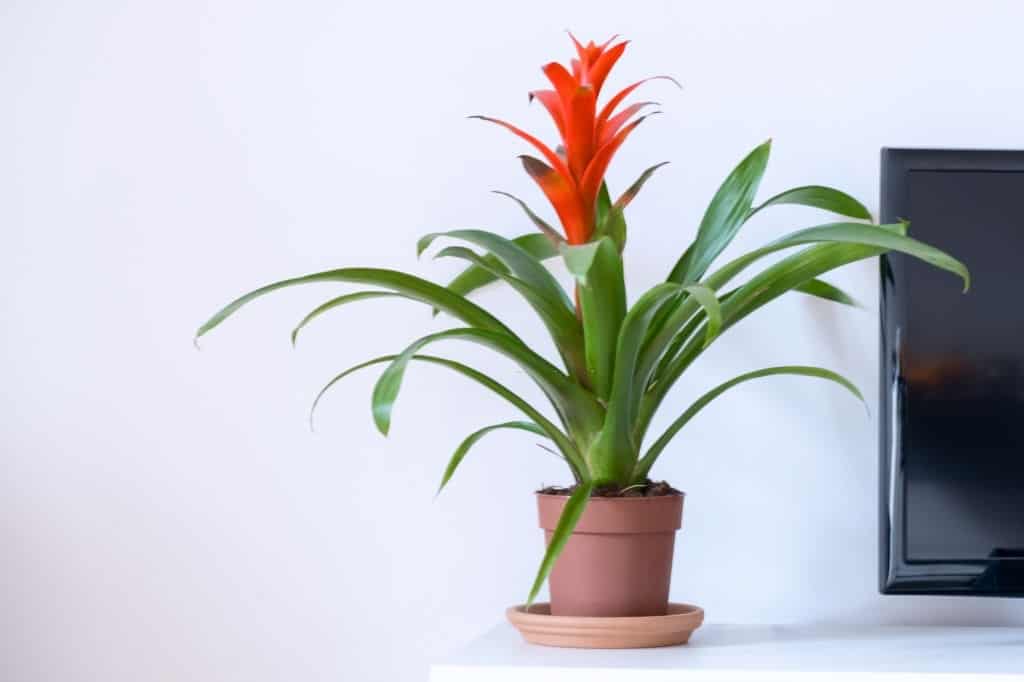
Very popular houseplants because they can tolerate lower light levels than many other bromeliads.
Their upright flower stems are brightly colored and very long lasting as well, and their soft leaves are spineless and perfectly safe for the frogs.
G. lingulata and its many varieties make good terrarium plants because of their relatively compact stature.
There are also many hybrids that are commonly available.
- LIVE INDOOR PLANT: Experience the beauty of the tropics in your own home with a stunning and easy-to-care-for bromeliad plant. Just place it on any tabletop, desk, side table, or windowsill and let it serve as the focal point in any room
- PLANTS MAKE YOU FEEL BETTER: Seeing greenery and nature in our rooms, desks, and offices help us feel more relaxed and calmer. NASA studies show having plants in your home improves your mood, sparks your creativity and reduces stress
- EASY TO CARE FOR: With minimal maintenance required, our bromeliad plants make an ideal choice for busy homeowners, renters, and plant enthusiasts alike
- CLEANER AIR: Often used in indoor landscaping and as natural air purifiers, bromeliad plants make for an eco-friendly and healthful addition to any living environment
- GORGEOUS ROOM DECOR: Add a touch of vibrant and exotic color to your home or office space with a live, flowering bromeliad
Neoregelia Bromeliads: Plant Care & Growing Guide
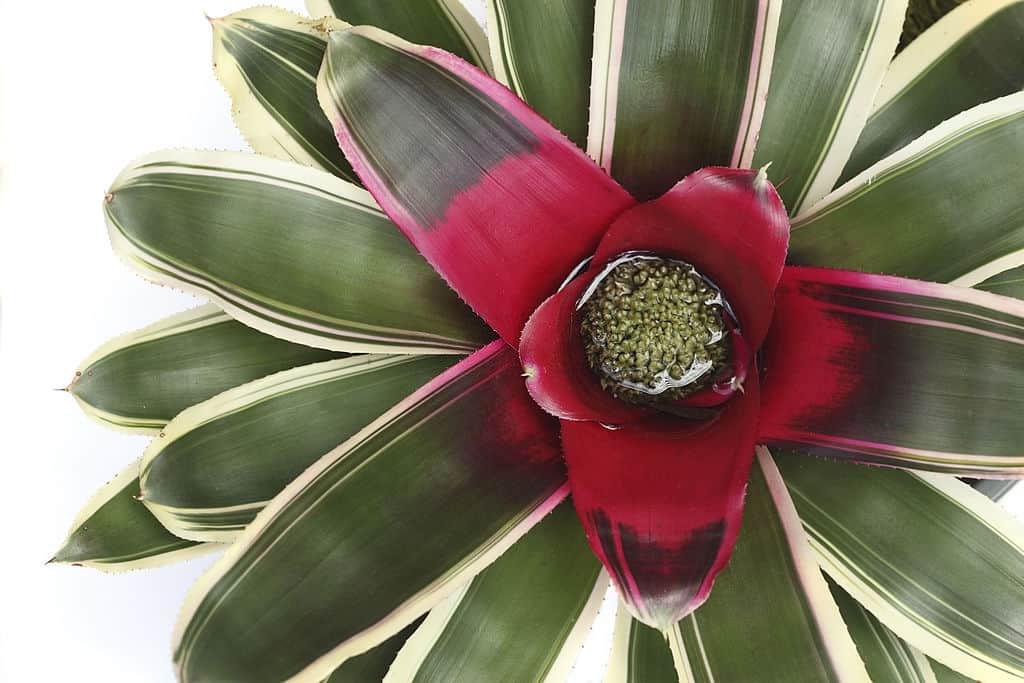
These plants are very popular as well, with their brightly colored low-growing rosettes.
N. carolinae is a popular houseplant in its variegated form, cv.
Tricolor-LLIFLE, is very attractive with green leaves striped with white and tinged with pink.
Like most Neoregelias, its central leaves turn bright red when it is in flower. N. cv.
Fireball is a popular vivarium subject with dark burgundy leaves in good light, and numerous offsets or “pups” on short stolons.
I have rooted this form in small cups of water showing how adaptable this plant is.
It is a compact plant, but even smaller are N. ampullacea and N. tigrina, which look like little green test tubes with reddish spots and stripes.
Neoregelias do not form flowering stems but produce their flowers directly in their central cups.
- Optimized Growing Environment: Our Bromeliad Soil Mix in the generous 8-quart package is expertly formulated to create an optimal growing environment for your bromeliads. This blend strikes the perfect balance between aeration, drainage, and moisture retention, providing the ideal conditions for these unique and tropical plants to thrive.
- Effective Drainage for Healthy Roots: Bromeliads, with their distinctive rosette-shaped foliage, require a soil mix that promotes effective drainage to prevent waterlogged roots. Our specialized blend ensures proper drainage, reducing the risk of root rot and fostering a healthy root system that supports robust growth.
- Nutrient-Rich Medium: Enriched with essential nutrients, our bromeliad soil mix provides the necessary elements for vibrant foliage and stunning blooms. The carefully selected components contribute to a nutrient-rich medium, addressing the specific needs of bromeliads and enhancing their overall health and visual appeal.
- Versatility for Various Bromeliad Species: Whether you have epiphytic or terrestrial bromeliads, our soil mix is versatile enough to accommodate the diverse requirements of different bromeliad species. This adaptability makes it suitable for both indoor and outdoor cultivation, catering to the unique preferences of your plants.
- Cost-Effective 8-Quart Supply: With a substantial 8-quart quantity, our Bromeliad Soil Mix offers a cost-effective solution for potting or repotting multiple bromeliads. This ample supply ensures that you have enough soil to care for a growing bromeliad collection, making it a convenient choice for enthusiasts and landscapers alike.
Nidularium Bromeliads: Plant Care & Growing Guide
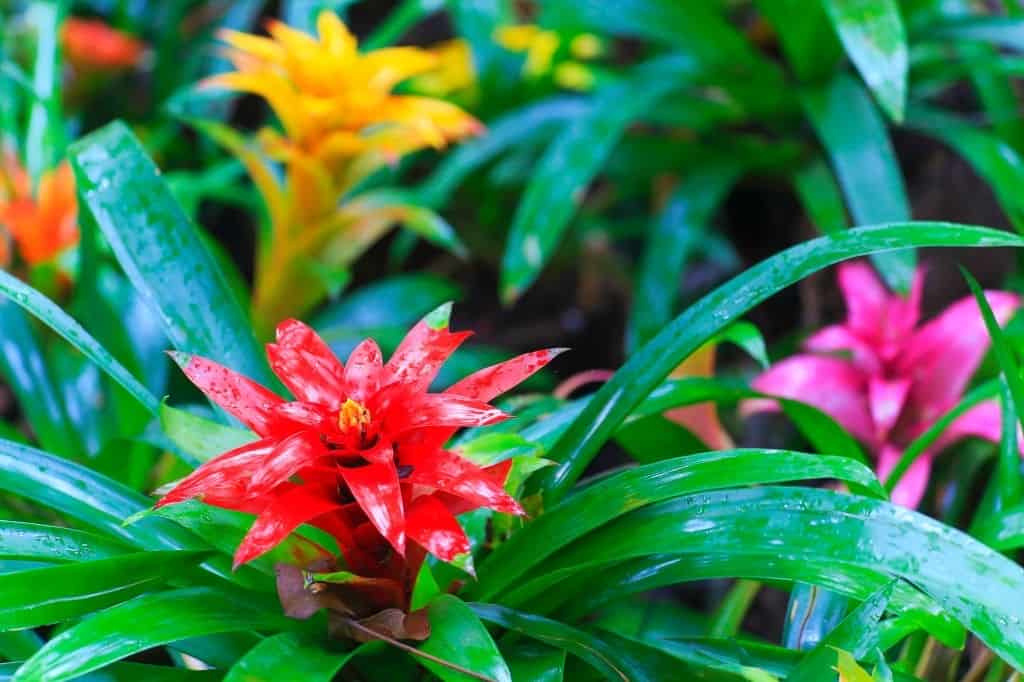
It is a similar genus that also forms low-growing rosettes. Nidularims can tolerate low light levels and still grow well.
They are mostly green, but the central leaves turn red when the plants are ready to flower,
The branch forms a short stem and can last for several months adding a nice spot of color to your terrarium.
- TAILORED BROMELIAD NUTRITION - Specially crafted for Bromeliads, Tillandsias, & Guzmanias, our air plant fertilizer is enriched with essential micronutrients like Iron, Manganese, & Zinc, ensuring your plants flourish
- EXPERTLY BALANCED NPK - Through our balanced 17-8-22 NPK ratio and slow-release formula, this bromeliad fertilizer delivers a steady supply of nutrients, promoting lush foliage & stunning flowers while boosting your air plant's water-holding capacity
- INDOOR & OUTDOOR USE - Perfect for any setting, our fertilizer for air plants works wonders on Bromeliads in pots with well-draining soil or as epiphytes on tree branches and bark slabs. It's the ideal choice for both indoor and outdoor gardens
- EASY & FLEXIBLE APPLICATION - Simplify your plant care routine! Just mix 1/4 teaspoon per gallon of water and use our slow release plant fertilizer as a drenching spray or with a sprinkler can. Easily saturate leaves, bark, & any surrounding area
- MADE IN THE USA - Manufactured right here in the USA by our plant-loving team, our water soluble fertilizer for air plants has become a true staple across the nation for those with the greenest of thumbs
Tillandsia Bromeliads: Plant Care & Growing Guide
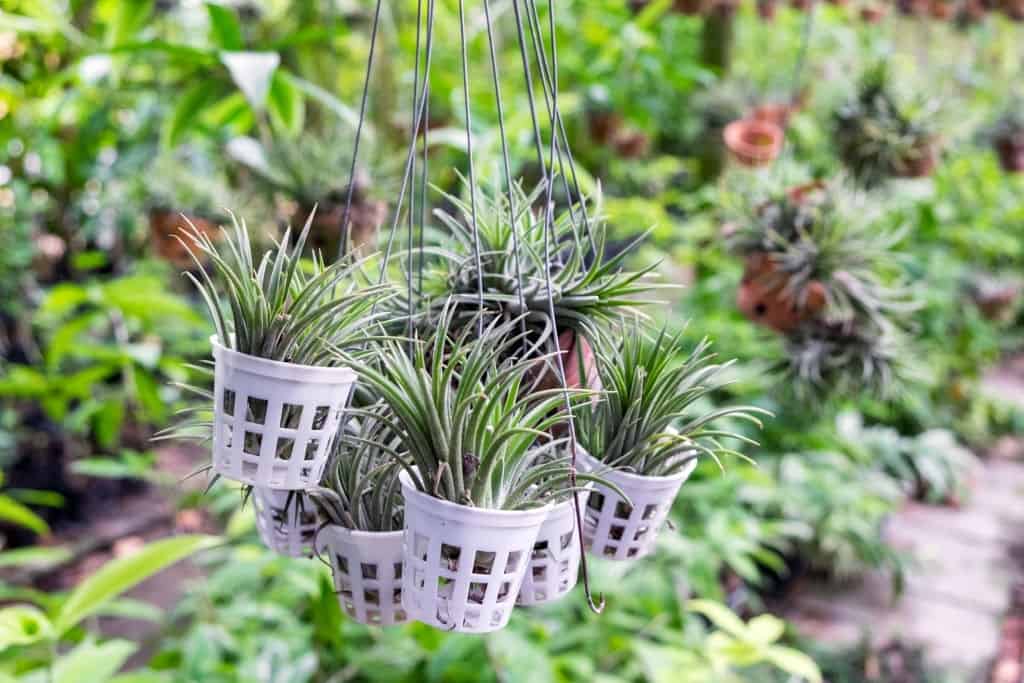
Also Known as the airplants, they have the most varied growth forms among the bromeliads, ranging in the wide-leafed rosettes to whispy mosslike forms.
They can roughly divide the genus into two groups based on their preferred growing conditions: mesic and xeric.
The mesic species, like T. cyanea and T. complanata, prefer moist conditions and can hold some water in their rosettes. Xeric species prefer dryer conditions and will die without good air circulation.
Are Tillandsia epiphytes?
Most Tillandsia species are considered epiphytes its meaning refers to ‘upon a plant‘.
How do you take care of a Tillandsia air plant?
Tillandsias can be easily glued by their bases to branches, even upside-down.
In fact, the inverted position can prevent xeric types from rotting by preventing water from collecting on their leaves.
Mesic, Xeric & Hydric Air Plants
Xeric species have slivery hairs or scales that cover their leaves, which the plants use to absorb atmospheric moisture.
Their hairs have to dry out between waterings, or the plant will suffocate.
These forms count among the true air plants surviving and growing even without being firmly attached to anything at all.
T. ionantha is a xeric species that does well in vivariums, and its little clumps of pointed green leaves turn red when the plant is flowering.
What are xeric plants?
The Term xeric came to light in the early 1980s. Referring to a variety of vivarium plants that live in extreme dry conditions is called as “Drought Plant”.
These plants only require a small amount of moisture to flourish like a normal one. hence became popular among paludarium enthusiasts.
No products found.
Vriesea Bromeliads: Plant Care & Growing Guide
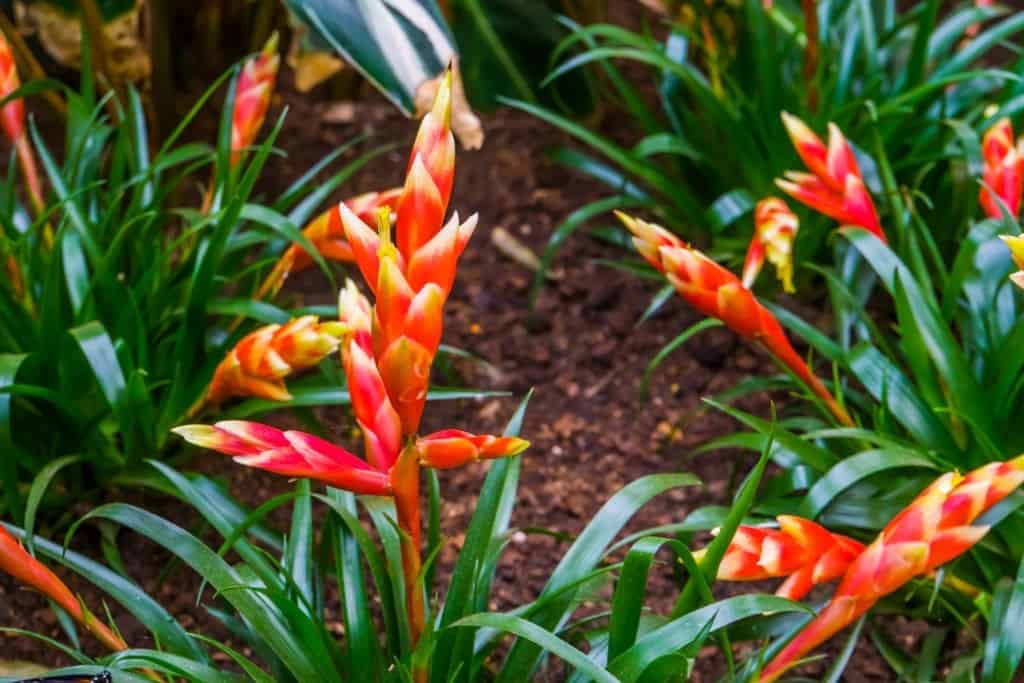
It is another popular houseplant, and most species and hybrids do well in relatively low light levels like we find in our vivariums.
Like Guzmanias their leaves are usually soft and spineless.
V. splendens, with its dark-striped, green leaves and flaming red flower spike, is spectacular and often seen for sale in supermarket flower shops.
Smaller varieties often have plain green leaves, but their paddle-shaped flower spikes always provide a long-lasting splash of color and make them easily recognizable.
Varieties such as ‘Julie,’ ‘Mon Petit’ and ‘Pinkert’ stay on the small side.
10 more Easy Vivarium Plants that I recommend
Pothos Plant
different kinds of pothos available in the market there’s like
- golden pothos
- marbled queen
- Cebu blue
- pearls and Jade neon
Common nerve plant or Fattonia
it’s pretty much bulletproof grow in low light conditions and is native of South America.
The creeping fig
ficus pumila is basically a fast-growing vining plant that is adapted to subtropical and tropical climates in landscaping.
Moranto or the prayer plant
Moran Toluca Noura is a super common plant we can find in garden centers, grocery stores, and gateways.
It grows really well in a dart frog tank and tolerates low light conditions.
Dendron scandens (Hartley philodendron)
grows really well in gecko tanks, no high light conditions are required for it.
it uses whatever humidity is available hence, an easy vining plant that we can grow in backgrounds.
Pylea spruce Jana
An easy-growing plant that shifts upstairs in a pot requires watering once a week, no need for insanely high light and humidity makes it a favorite choice.
Rex Begonias
Cultivars out there prefer growing this plant, in a terrarium, they’re gonna get massive hence.
Available in many different colors, pick the color you like and throw it in your tank if you have large tanks.
Peperomia Obtuse
There are a ton of different varieties available,
They all grow very similarly they typically tolerate the relatively low amount of light and loves humidity.
Their Durable Leaves is what red-eyed tree frogs even dart frogs like.
NeoGeo bromeliads
Are a lot cheaper variants in the USA and Canada varying from 15-30$
Pylea phyla dendron peperomia
These do well in vivarium ‘z terrariums and in a controlled environment, they’re even used as a house plant.
For Further Reading
Here is an interesting article about vivarium substates Best Substrate Mixtures for the Vivarium. (And How to make it)
An article about how ways to keeps vivarium plants healthy What plants can I put in a vivarium? (How to keep them Alive)




